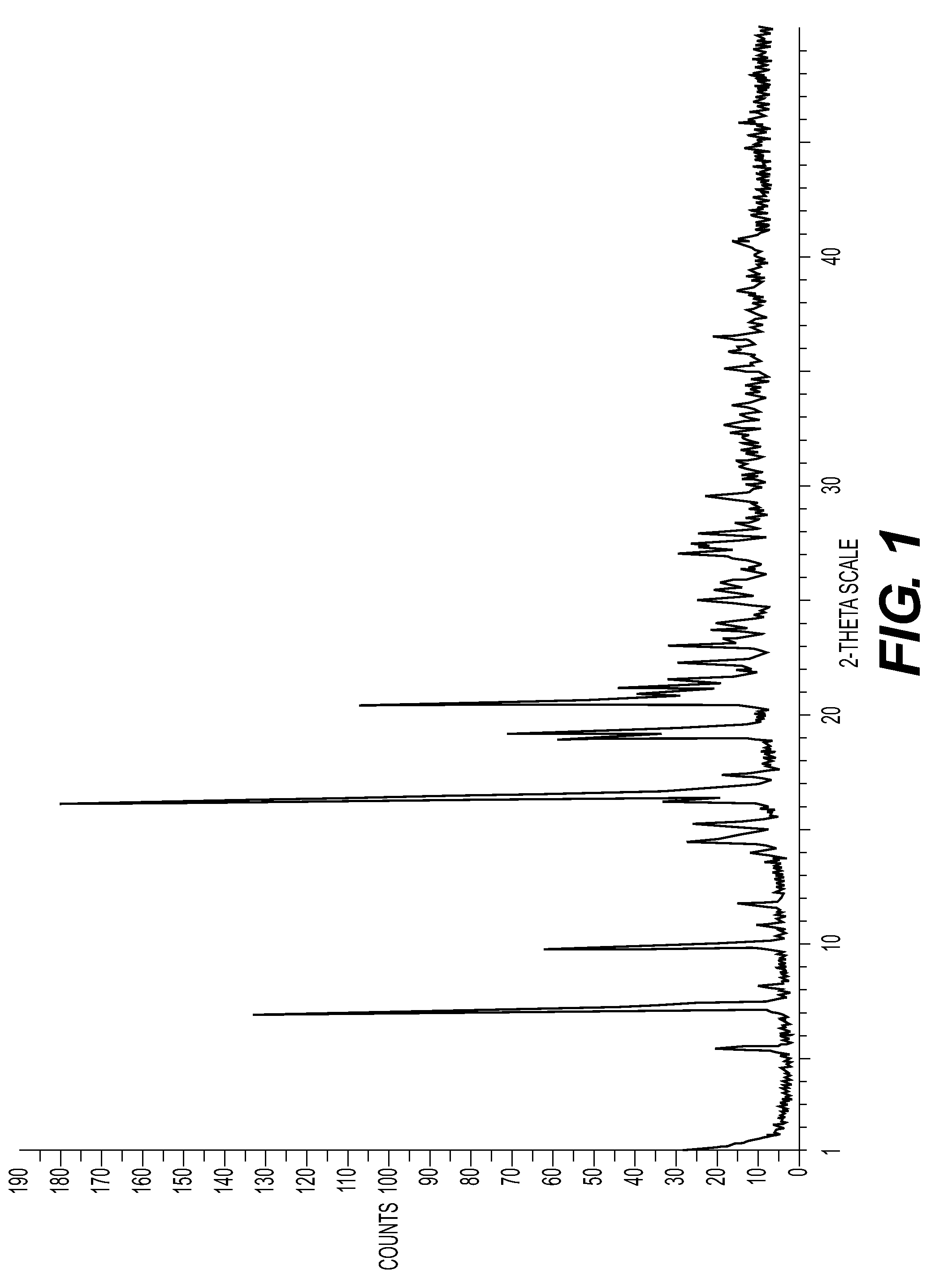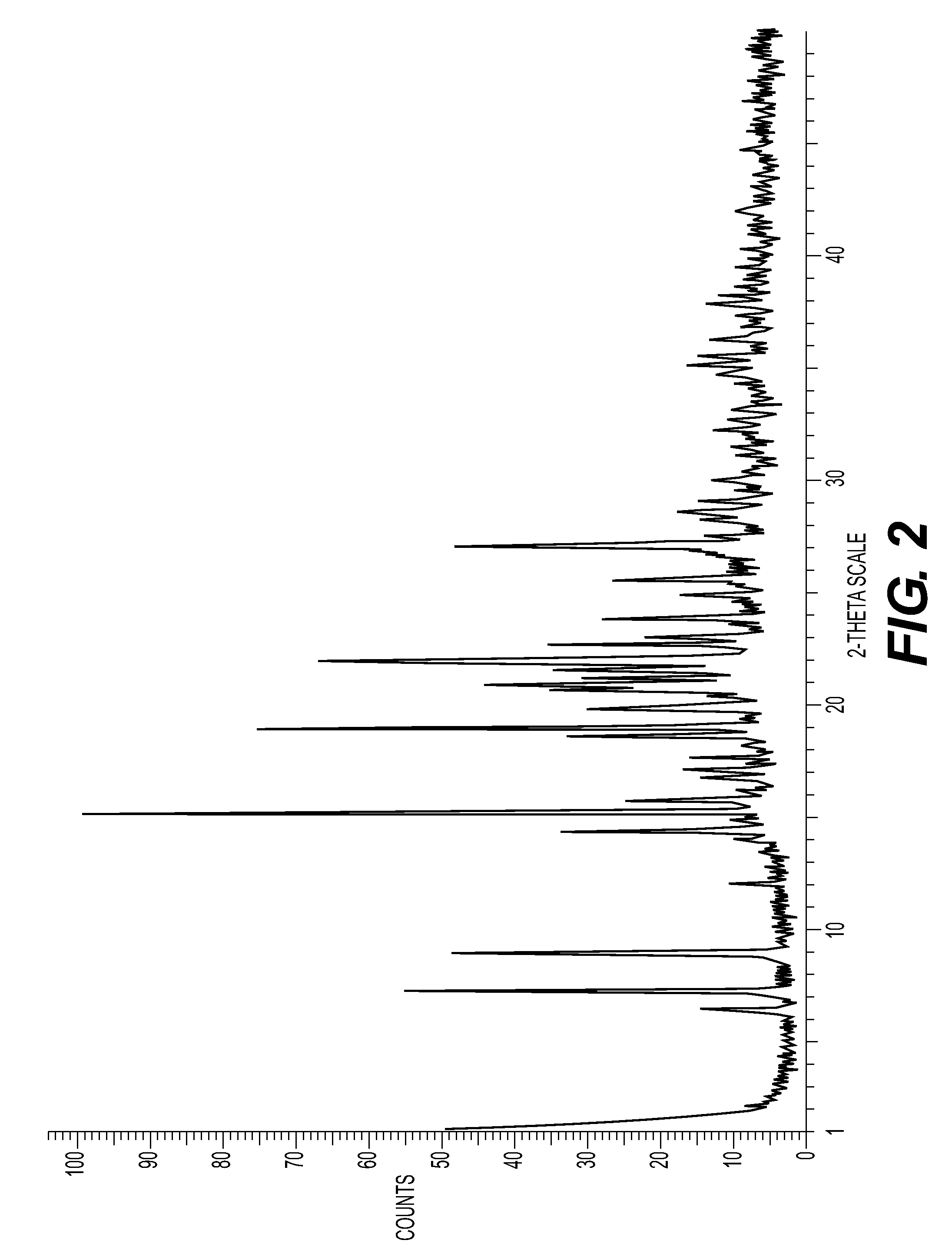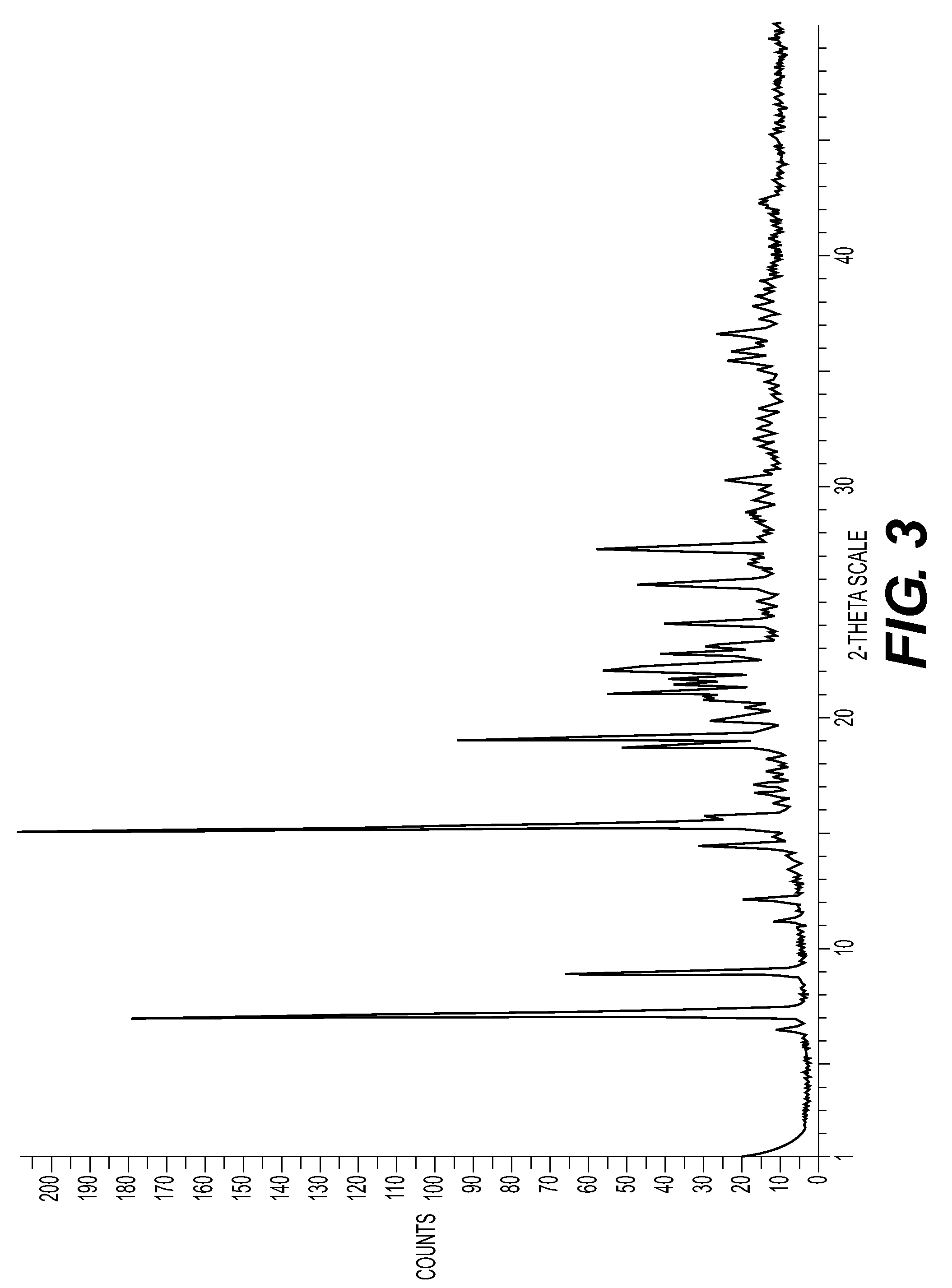New Salts
a technology of compounds and salts, applied in the field of new salts of compounds, can solve the problem of no information in relation, and achieve the effect of improving chemical and/or solid state stability
- Summary
- Abstract
- Description
- Claims
- Application Information
AI Technical Summary
Benefits of technology
Problems solved by technology
Method used
Image
Examples
example 1
General Method for Salt Preparation
[0180]The following generic method was employed to prepare salts of Compound A; 200 mg of Compound A (see Preparation A above) was dissolved in 5 mL of MeOH. To this solution was added a solution of the relevant acid (1.0 molar equivalent) dissolved in 5 mL of MeOH. After stirring for 10 minutes at room temperature, the solvent was removed by way of a rotary evaporator. The remaining solid material was re-dissolved in 8 mL of acetonitrile; H2O (1:1). Freeze-drying afforded colorless amorphous material in each case.
Acids Employed:
[0181](1S)-(+)-10-camphorsulfonic
malic
cyclohexylsulphamic
phosphoric
dimethylphosphoric
p-toluenesulphonic
L-lysine
[0182]L-lysine hydrochloride
saccharinic
methanesulphonic
hydrochloric
[0183]Appropriate characterising data are shown in Table 1.
TABLE 1Λ ppm (MeOD)H18, H19, H24(see structureat end ofSaltMw acidMw saltLRMSExample 9 below)(1S)-(+)-10-232.20729.20230.97.57, 7.68, 3.97camphorsulfonate495.1497.0727.3maleate116.07612.9711...
example 2
[0185]Further amorphous salts of Compound A were made using analogous techniques to those described in Example 1 above from the following acids:
hydrobromic acid (1:1 salt)
hydrochloric acid (1:1 salt)
sulphuric acid (1:0.5 salt)
1,2-ethanedisulfonic acid (1:0.5 salt)
1S-camphorsulfonic acid (1:1 salt)
(+ / −)-camphorsulfonic acid (1:1 salt)
ethanesulfonic acid (1:1 salt)
nitric acid (1:1 salt)
toluenesulfonic acid (1:1 salt)
methanesulfonic acid (1:1 salt)
p-xylenesulfonic acid (1:1 salt)
2-mesitylenesulfonic acid (1.1 salt)
1,5-naphthalenesulfonic acid (1:0.5 salt)
naphthalenesulfonic acid (1:1 salt)
benzenesulfonic acid (1:1 salt)
saccharinic acid (1:1 salt)
maleic acid (1:1 salt)
phosphoric acid (1:1 salt)
D-glutamic acid (1:1 salt)
L-glutamic acid (1:1 salt)
D,L-glutamic acid (1:1 salt)
L-arginine (1:1 salt)
L-lysine (1:1 salt)
L-lysine hydrochloride (1:1 salt)
glycine (1:1 salt)
salicylic acid (1:1 salt)
tartaric acid (1:1 salt)
fumaric acid (1:1 salt)
citric acid (1:1 salt)
L-(−)-malic acid (1:1 salt)
D,L-ma...
example 3
Preparation of Amorphous Compound A, Ethanesulfonic Acid Salt
[0186]Compound A (203 mg; see Preparation A above) was dissolved in ethanol (3 ml) and ethanesulfonic acid (1 eq., 95%, 35 μL) was added to the solution. The mixture was stirred for a few minutes, and then the solvent was evaporated. The resulting oil was slurried in iso-octane and evaporated to dryness until a solid material was obtained. Finally, the substance was re-slurried in iso-octane and the solvent evaporated again resulting in a white, dry, amorphous solid. The substance was vacuum dried at 40° C. overnight.
PUM
 Login to View More
Login to View More Abstract
Description
Claims
Application Information
 Login to View More
Login to View More - R&D
- Intellectual Property
- Life Sciences
- Materials
- Tech Scout
- Unparalleled Data Quality
- Higher Quality Content
- 60% Fewer Hallucinations
Browse by: Latest US Patents, China's latest patents, Technical Efficacy Thesaurus, Application Domain, Technology Topic, Popular Technical Reports.
© 2025 PatSnap. All rights reserved.Legal|Privacy policy|Modern Slavery Act Transparency Statement|Sitemap|About US| Contact US: help@patsnap.com



